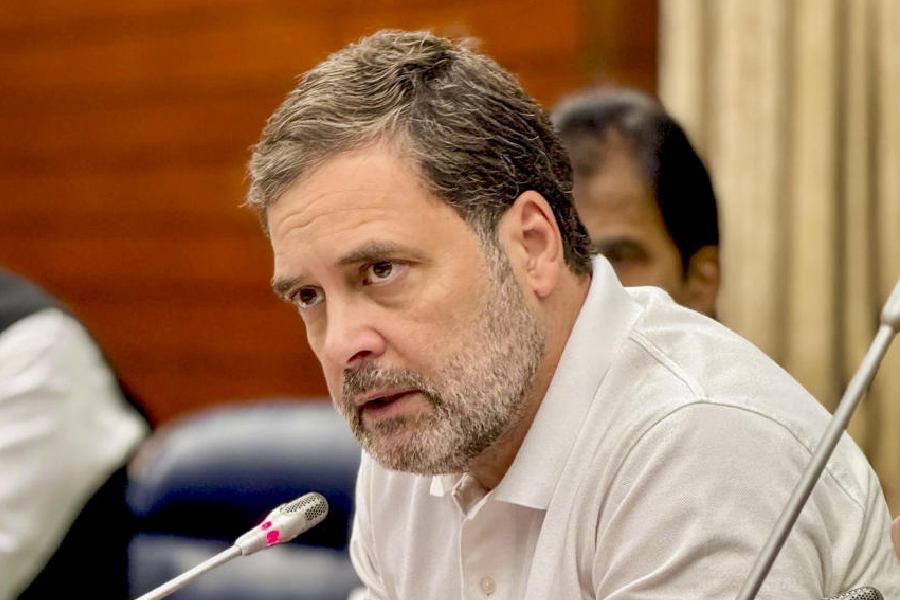When the Narendra Modi government notified the rules for implementing the Citizenship (Amendment) Act over four years after it was passed by Parliament, a spokesman of the United States state department said that it was “concerned about the notification of the Citizenship (Amendment) Act on March 11. We are closely monitoring how this act will be implemented.” He added that the “respect for religious freedom and equal treatment under the law for all communities are fundamental democratic principles.” India’s external affairs ministry reacted sharply, describing the state department’s remarks as “misplaced, misinformed, and unwarranted”. It said that the CAA is “an internal matter of India and is in keeping with India’s inclusive traditions and our long-standing commitment to human rights.”
The matter didn’t end there. The same day, the US ambassador to India, Eric Garcetti, spoke about the issue at a public event, asserting that the principles of religious freedom and equality were a cornerstone of democracy. “But you can’t give up on principles, no matter how close you are with friends, or if it comes from your worst enemy, when those are principles that you stand for”, he added. A day later, the external affairs minister, S. Jaishankar, indulged in his usual sophistry, a mix of half-truths and contextless historical references, to suggest that this was an unkept promise of Partition, when it is certainly not the case.
The matter currently rests there but the episode showcased another point of difference between India and the United States of America in recent months. India’s treatment of religious minorities under the Modi government has been noted adversely by the bipartisan United States Commission for International Religious Freedom, which has repeatedly recommended that India be designated as country of particular concern. In January, it publicly said, “There is no justification as to why the State Department did not designate Nigeria or India as a Country of Particular Concern, despite its own reporting and statements. USCIRF calls on the Congress to convene a public hearing on the failure of the State Department to follow our recommendations.”
An even bigger challenge has been posed by the attempted assassination of the Sikh separatist leader, Gurpatwant Singh Pannun, where an operative of India’s external intelligence agency has been mentioned as a co-conspirator by the US department of justice. The US Congress has been pressing the Joe Biden administration to demand firm and decisive action from India on the ‘murder for hire’ case, at one stage even jeopardising the Predator drone deal announced with great fanfare by Modi during his American visit last June. Bloomberg reported that the Modi government has apparently told the US that Pannun was targeted by a "rogue" operative operating without official sanction. This was told to the American authorities by New Delhi as part of the findings from the enquiry set up by the Modi government in November to probe the charges of extrajudicial transnational killing. The US is demanding criminal prosecution of the individuals involved, a request made by Donald Lu, assistant secretary of state for South and Central Asia, during his visit to India in January. During a recent Congressional hearing, Lu reiterated the message: “We are at the moment working with India to encourage India to hold accountable those responsible for this terrible crime. What we can see is that India itself has announced that they have created a committee of inquiry to look into this matter and we ask them to work quickly and transparently to make sure justice is done.”
This is an issue which cannot be wished away by the Modi government, particularly if it needs the US to counter China. Last month, the defence secretary, Giridhar Aramane, said in the presence of American officials that “the one thing which helped us quickly” during the Ladakh border crisis with China in 2020 “was the intelligence, the situational awareness which the US government and the US equipment could help us with.” He argued that “the strong resolve that we support each other in the face of a common threat is going to be of critical importance to us,” going on to plead that “we expect that our friend, US, will be there in case we need their support.” This was confirmed by Jaishankar when he argued that the US-China competition is “healthy” and much better than a compact that would squeeze out India.
Having lost control of territory in border areas to China and with the vast disparity in power that has widened under Modi, India’s hands are tied. China remains the one issue on which its interests converge with American interests, particularly in the short term. The Modi government has thus no choice but to yield to US demands, be it on an import ban on laptops and computers or on a probe into the Pannun assassination attempt.
China happens to be the big glue, but there are other geopolitical areas where India and the US are peeling away from each other. This includes, among others, Russia, Iran, Myanmar, Bangladesh — not even mentioning the huge tussles in the World Trade Organization over trade. The Modi government also wants to dispense with the post-World War global order, something that was created by the US and one that it does not want to do away with.
Two decades back, the prevailing wisdom in the US was that even if it didn’t have common interests with India, the country’s claim of a liberal democracy made it a strong bet in the long run. It was a bet on India’s future. Now, those arguing for a long-term bet on India are grappling with the scary question: in the next 20 years, what kind of an India will it be?
These tensions, pulls and pressures are being reflected in the state of the bilateral relationship. Those paying attention to the subtext can see the subtle, yet significant, shifts. When some American officials start justifying working with the Modi government because it is not yet as bad a democracy as some former Soviet republics or not as authoritarian as twentieth-century South Korea, you know that the lens for looking at India has altered. It is not that the US will suddenly shun India, but it is about the nature of partnership that Washington DC will have with New Delhi. The Modi government hopes that it will be like the one Japan has with the US. But devoid of shared values, it could degrade to one of temporary convergent interests, like the US has had with Pakistan.
Sushant Singh is Senior Fellow with Centre for Policy Research, New Delhi











